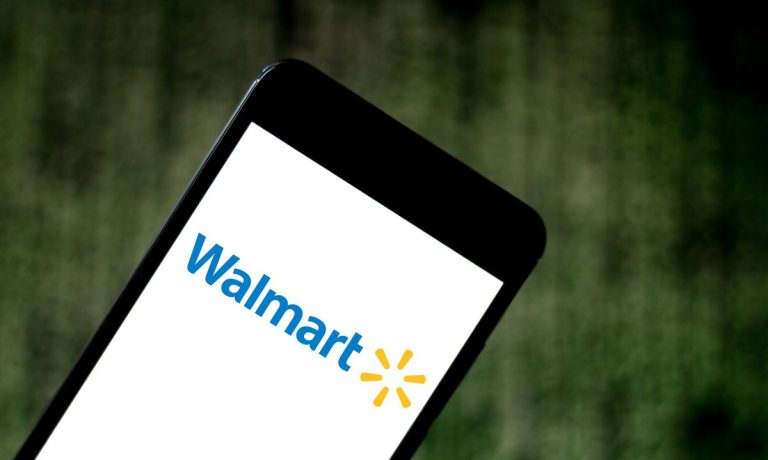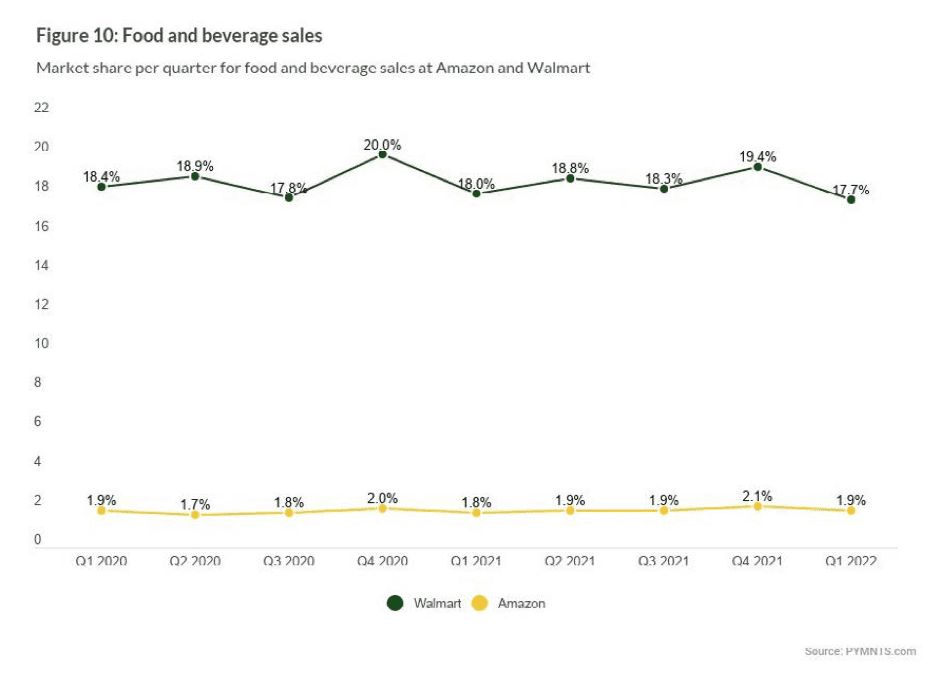
For the two biggest players in retail, grocery may well be the defining category that determines how the last mile evolves.
As reported by PYMNTS, the battle is a pitched one, as Walmart and Amazon joust day in and day out for consumers’ mindshare and wallet share. As we noted, too, Amazon has been investing heavily in its years-long bid to build out logistics and its Subscribe & Save program.
The category is a critical one for Walmart, too: It garners more than 50% of its revenues from food and beverage sales. That translates to about an 18% share of spending on those items, overall, compared to Amazon’s less than 2%.
 But for both merchants, the goal is to be, essentially, a one-stop shop for all manner of everyday spend. Amazon. Walmart, of course, has made its mark in brick-and-mortar retail, which, amid the great reopening, has not given the firm as much top-line torque as might have been hoped.
But for both merchants, the goal is to be, essentially, a one-stop shop for all manner of everyday spend. Amazon. Walmart, of course, has made its mark in brick-and-mortar retail, which, amid the great reopening, has not given the firm as much top-line torque as might have been hoped.
PYMNTS’ data found that Walmart’s high foot traffic hasn’t resulted in a massive rise in its retail spend on site, which according to the most recent sales figures, is up about 3%, excluding fuel. Walmart, then, would need to boost its eCommerce appeal, especially as it seeks to stave off Amazon.
Moving Beyond the Buy Button
eCommerce, of course, is about more than simply browsing, clicking and checking out on a web page. What comes next is critical: Getting the goods to the doorstep.
And here is where Walmart’s last-mile efforts may become a key differentiator, keeping in mind some special considerations when delivering groceries, especially on a recurring basis.
As profiled last month, Walmart has been leveraging its scale to offer in-house delivery but also has been monetizing its fulfillment network with its Walmart GoLocal white-label delivery service, serving more than 2,000 retail locations across the country.
And earlier this year, delivery and fulfillment firm Delivery Solutions has announced that Walmart’s GoLocal service is joining its platform as a last-mile delivery provider. Those efforts will be focused on same day and next day delivery, which dovetails with the frequent purchasing, and relatively small ticket purchases, that tend to be characteristic of grocery spending.
Drones, of course, lend themselves well to delivering grocery items, too. And here is where there is another subset of competition between Walmart and Amazon, which has been testing its Prime Air service. Walmart is expanding its unmanned aerial delivery service with partner DroneUp to six states, with plans to complete 1 million drone deliveries by the end of the year. Drones are being positioned as a complement its other delivery options including express delivery and in-home or in-fridge grocery delivery service.
Consumers, of course, want speed and convenience when it comes to filling the pantry and the fridge — and Walmart’s last mile efforts will be a key part of satisfying those expectations.
Read also: Walmart Ups Drone Delivery Comp With Amazon, Expands Program to 6 States